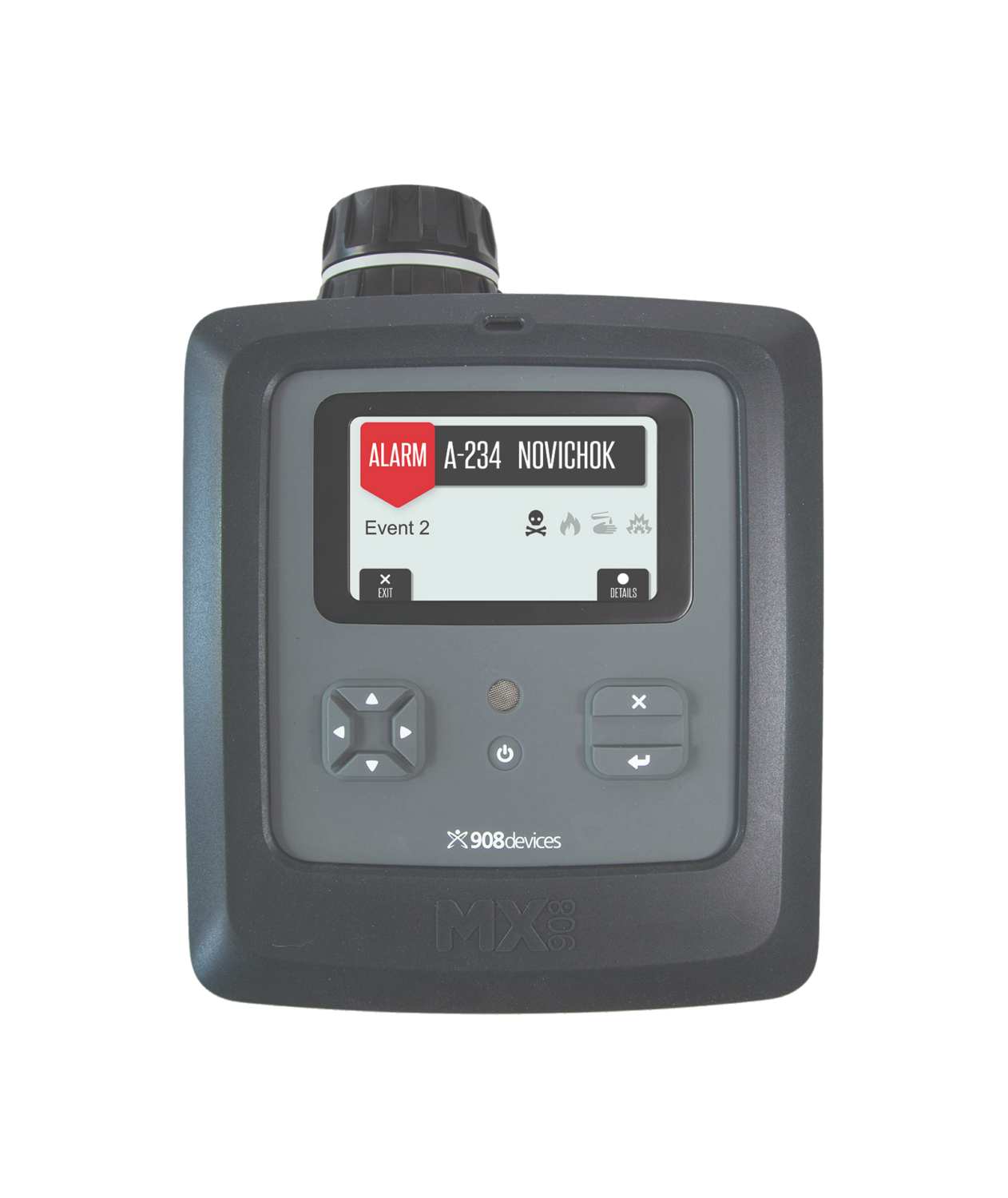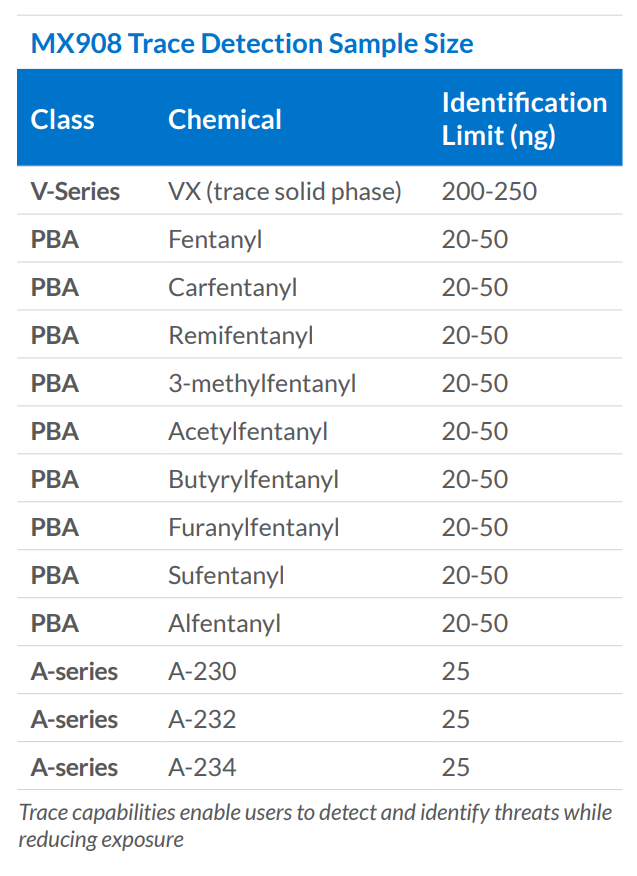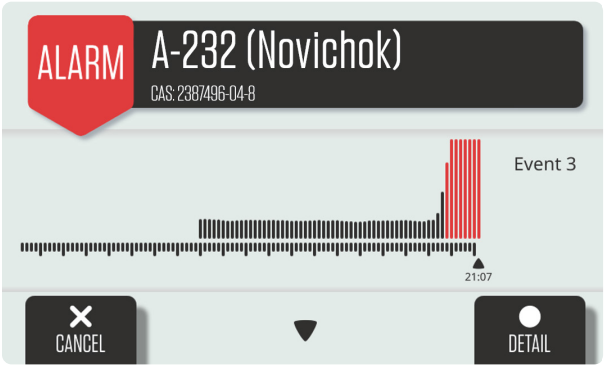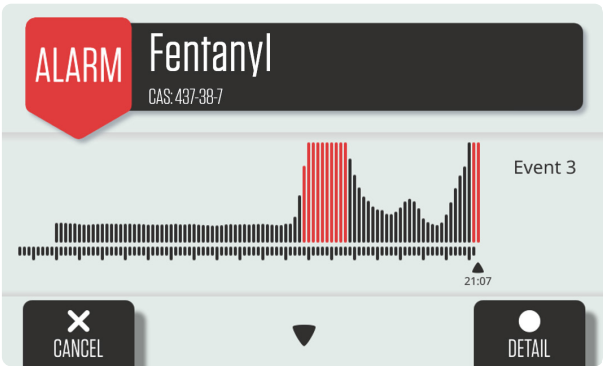Operational Impact of Fourth Generation Agents and Pharmaceutical Based Agents
The MX908 handheld mass spectrometer is the only device able to detect and identify both A-Series Agents and PBAs at trace levels in solid, liquid, vapor, and aerosol forms.

Third-generation chemical warfare (CW) agents (binary G series and VX) were developed for their lethality, stability, and ease of weaponization. These have been the focus of CBRNE detection and protective equipment by US and NATO forces, which are well trained and equipped to counter these traditional CW agents.
Unfortunately, chemical warfare agents have continued to evolve. Russian developed fourth generation agents represent the latest evolution in the CW landscape. These A-Series Agents, also known as Novichoks, were employed in 2018 in Salisbury, UK in the attempted assassination of the Skripals, and, most recently, in 2020 in an assassination attempt of Russian opposition leader Alexei Navalny. Current global conflicts have increased the concern over use of chemical warfare agents.
Responding to A-Series CW Agents
A-Series agents, potent acetylcholinesterase inhibitors with signs and symptoms similar to traditional G- and V-Series nerve agents, were designed with specific knowledge of existing NATO detection and protective equipment, and ultimately, the goal of countering those detection and protection methods. They tend to be oily liquids which produce little to no vapors. They pose significant cross-contamination and exposure risks due to a combination of high potency and environmental persistence, and consequently a small release can rapidly become a large-area hazard. Due to their increased potency they often require higher antidote doses and can create additional vapor hazards when improperly decontaminated.
Traditional CBRNE detection equipment was designed to detect vapors which are characteristic of G-series and even VX agents, and have not yet evolved to detect or identify A-Series agents. This capability gap poses significant challenges to essential CBRNE tasks such as detection, determining limits of contamination, establishing control zones, selecting decontamination solutions, and verifying decontamination procedures to regenerate combat power in contaminated environments. The US Department of Health and Human Services issued emergency response guidelines for these agents in 2019, where they noted that, “There is a limited fielded capability within hazardous materials teams to detect, characterize, and identify FGAs.” These limitations are also true for traditional military forces.
Responding Pharmaceutical Based Agents
Synthetic opioids such as fentanyl pose a similar risk to nerve agents with their potency and potential lethality. These are often referred to as pharmaceutical based agents (PBAs). While not unique to Russia, these agents were first deliberately weaponized during the Moscow theater crisis where more than 100 people died from respiratory arrest after a PBA mixture was disseminated in aerosol form. Synthetic opioids are readily available through global illicit supply chains and are also synthesized by state actors. There are hundreds to thousands of potential PBA options, none of which are detected by traditional CBRNE detection technology during an aerosol dispersal event.

Aerosols are a fine suspension of liquids or solids in the air. They behave like gases yet are unable to be detected, much less identified, by fielded vapor detectors. This makes aerosolization an incredibly effective deployment method for CWAs and PBAs.
Detection Technology that can Detect and Identify A-Series Agents and PBAs
The MX908 handheld mass spectrometer is the only device able to detect and identify both A-Series Agents and PBAs at trace levels in solid, liquid, vapor, and aerosol forms. Easy to swap sampling modules enable the device to quickly switch from one sample type to another.
As a result, FGA and PBA hazards can now be detected on surfaces and in the air in under 60 seconds regardless of their mode of dissemination. Extensive third-party testing has shown detection efficiencies at or below the toxicologically relevant levels of most agents with a false negative rate of .6% when challenged with A-Series agents of varying purities on operationally relevant surfaces. Advanced software using predictive analytics further expands the detection capability of PBAs by increasing the effective library size to thousands of synthetic opioids.



The MX908 detects and identifies a broad range of priority drugs at trace levels in seconds.
The MX908 has the capability to detect and identify both A-Series Agents and PBAs in solid, liquid, vapor, and aerosol forms
Subscribe to Our Communications
Signup to receive new product updates, technical tips and more.